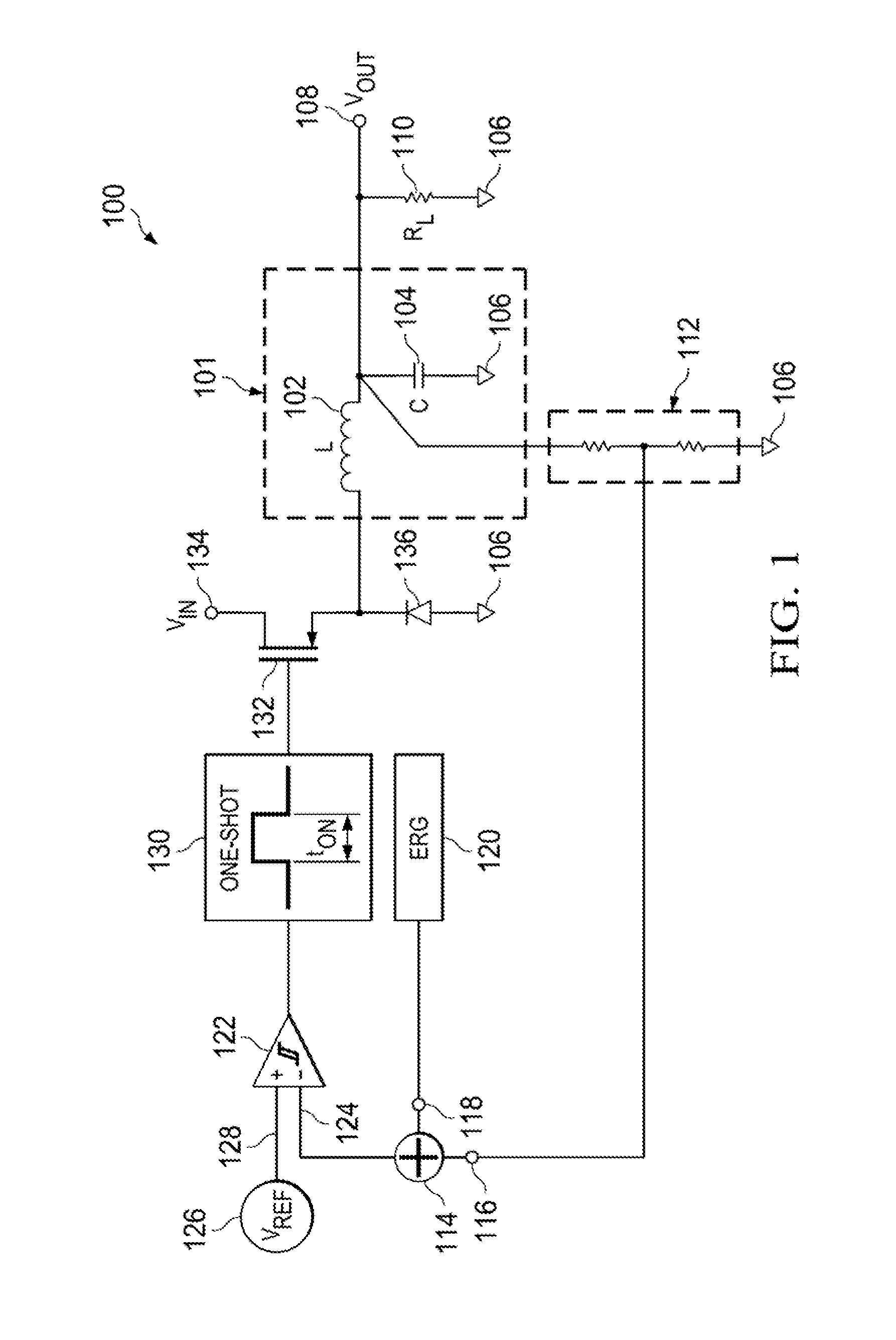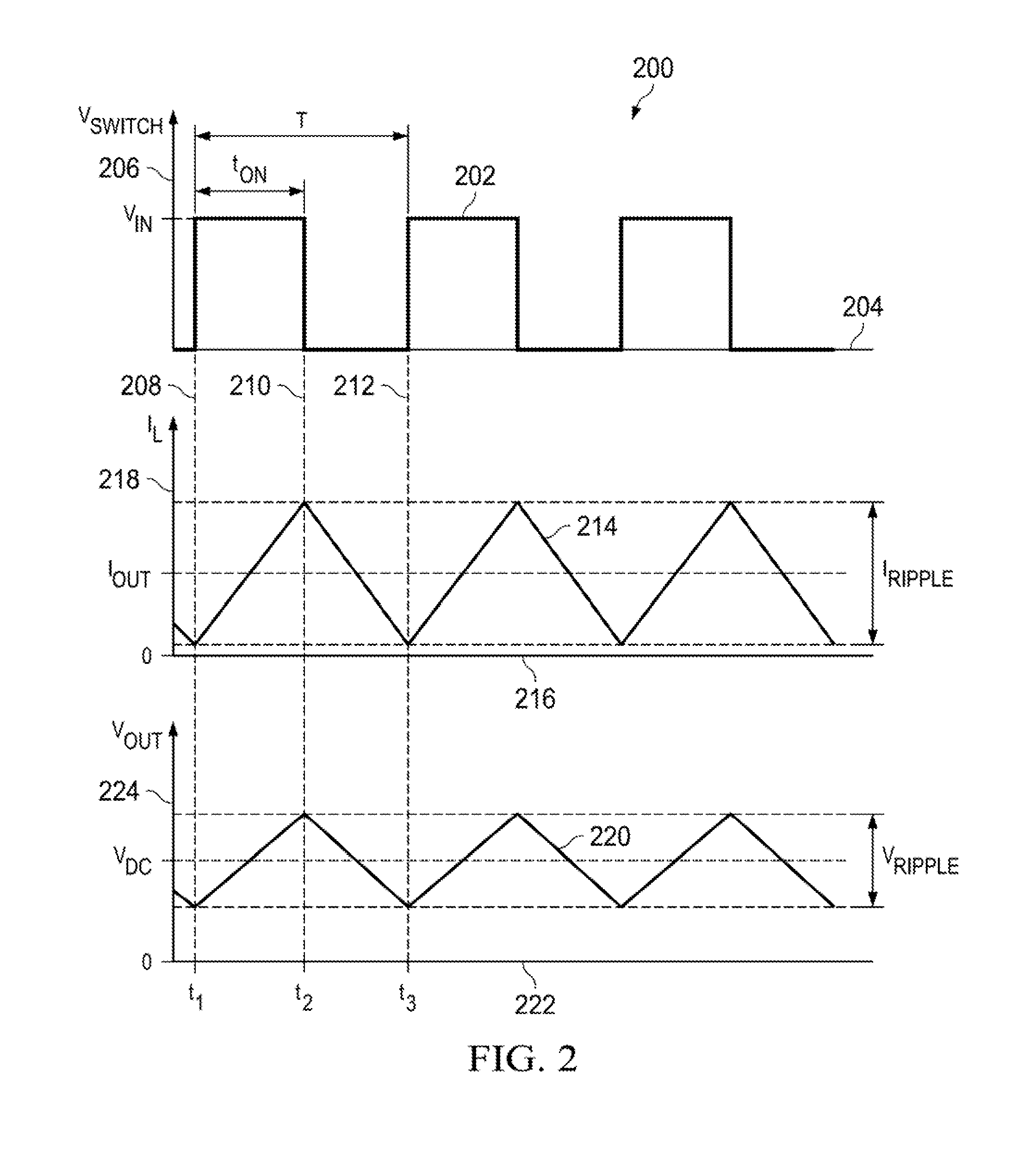Minimum on-time control for low load dc/dc converter
a technology of dc/dc converter and dc converter, which is applied in the direction of electric variable regulation, process and machine control, instruments, etc., can solve the problems of poor efficiency, low dc/dc converters that are not generally chosen for low-load converters, and stability problems requiring conventional complex compensation techniques, so as to reduce dc errors, reduce stability problems, and reduce the effect of dc errors
- Summary
- Abstract
- Description
- Claims
- Application Information
AI Technical Summary
Benefits of technology
Problems solved by technology
Method used
Image
Examples
Embodiment Construction
[0042]Aspects of the present invention are drawn to a DC / DC converter for use with a supply voltage, and that may drive a load.
[0043]A first aspect of the present invention is drawn to the use of both leading and trailing edges of an output of a comparator to cause the switching and selection of filter charge and discharge paths for the regulation of the output voltage. Both edges of the comparator are used in a way that imposes a fixed relationship between inductor current and load current in order to ensure scalability of load and output ripple as load decreases. This scalability is a great improvement over conventional low-load DC / DC converters where the output ripple stays high as the load decreases.
[0044]A second aspect of the present invention is drawn to the use of a reverse current detector to determine the point in the regulation cycle to cause the switching and selection of filter charge and discharge paths to force the low-load DC / DC converter operation into Discontinuous...
PUM
 Login to View More
Login to View More Abstract
Description
Claims
Application Information
 Login to View More
Login to View More - R&D
- Intellectual Property
- Life Sciences
- Materials
- Tech Scout
- Unparalleled Data Quality
- Higher Quality Content
- 60% Fewer Hallucinations
Browse by: Latest US Patents, China's latest patents, Technical Efficacy Thesaurus, Application Domain, Technology Topic, Popular Technical Reports.
© 2025 PatSnap. All rights reserved.Legal|Privacy policy|Modern Slavery Act Transparency Statement|Sitemap|About US| Contact US: help@patsnap.com



